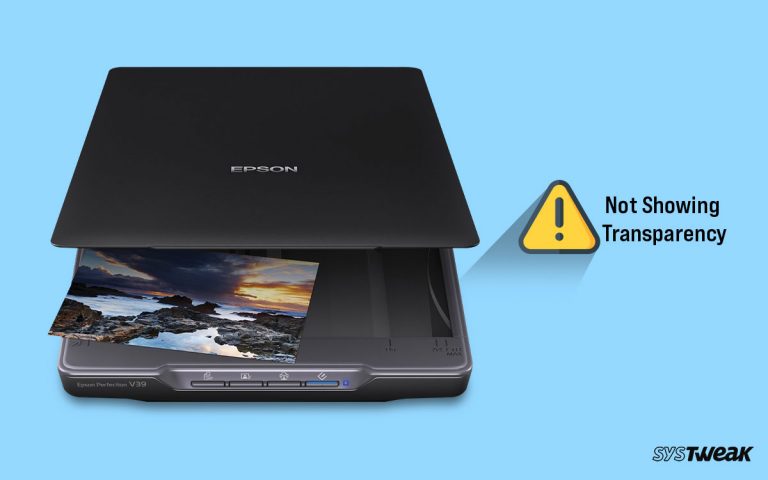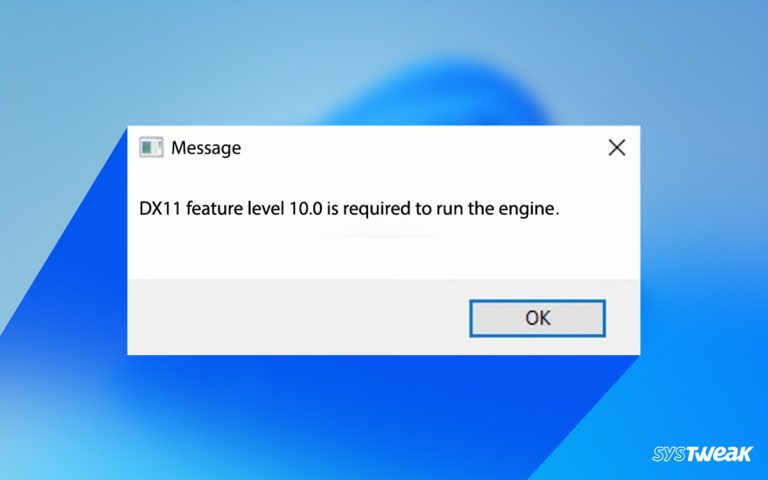Facing a problem with display? It seems the graphics driver is outdated. Here we explain how to update the graphics driver without any trouble.
50% OFF

BLACK FRIDAY OFFERS
Unlock Black Friday Mega Savings — Systweak Tools FLAT 50% OFF!
A graphics driver aka your display driver allows your operating system and other software to use computer graphics hardware. In the absence of a graphics driver, the screen turns black, the screen starts to flicker and you can’t see anything or play any games on your PC. Unless you face it, this might seem okay but trust me updating or reinstalling graphics drivers is a headache.
But you don’t have to worry, because we have got you covered. In this guide, we will explain how to update the display driver on Windows 10.
How To Update Graphics Driver?
Graphics driver for that matter any device driver can be updated in two ways. One is manual and the other one is an automatic way – using a driver updater utility. The former is time-consuming and requires patience and some technical knowledge while the latter is easy, quick, and effective.
To update drivers automatically, try Advanced Driver Updater, a professional driver updating utility that helps update all outdated drivers. Furthermore, before updating drivers, it takes a complete backup of the old drivers, as a precautionary measure and allows users to take a backup.
With a huge driver database, the tool is capable of accurately updating all outdated drivers. When using its free version, you have to update each driver individually by clicking the Update driver option. However, if you upgrade to the full version, you can update all drivers in a go by clicking Update All.
Wait, the benefits don’t end here, it even offers a 60-day money-back guarantee and a trained technical team is there for assistance.
Find it fascinating? Click here to jump to the section and learn how to update the graphics driver on Windows 10 using Advanced Driver Updater.
Tip : To update the graphics driver manually, you can visit the following manufacturer’s website. They will automatically detect your graphics card and will update the display driver to the latest version.
Now, let us learn how to update graphics driver Windows 10 – Manually.
Updating display driver manually
1. Press Windows + X > Device Manager

2. Look for the Display Adapters option > double click to expand it and look for the device you are using.

3. Select it > right-click Update driver.

4. From the following screen, select Search automatically for drivers.
5. Wait for Windows to look for an available driver update. If any is available, it will be installed. However, if the updated version of the driver is already installed you will get the message, the best drivers for your device are already installed.
In this scenario, click Search for updated drivers on Windows Update
6. You will now be redirected to the Windows Update window. Click View optional updates

7. Double-click Driver updates to expand the window and select the available driver update.
8. Click Download and install to update the display driver.
9. Restart the system to apply changes.
This is how you can update the graphics driver on Windows 10.
If this seems like a lot of work, you can switch to the automatic way and update the display driver on Windows 10.
How to Update Display Driver Automatically (Recommended)
To automatically update the display driver on Windows 10, try using Advanced Driver Updater. As the name suggests this trusted driver updating tool helps update drivers on Windows 10 and older versions. Also, it gives an option to exclude drivers from being scanned and not marked as out-of-date. This feature comes in handy when a certain update creates a problem. To use this feature, when you see the driver update > right-click the driver > Ignore.

This will add drivers to the exclusion list.
1. Download and install Advanced Driver Updater.
2. Launch the best driver updating utility.
3. Click Start Scan Now to scan the system for outdated drivers.

4. Wait for the scan to finish.
5. Once done, look for the graphics driver and click the Update driver button next to it.

Note : If you are using the Pro version of the product, you can update all outdated drivers by clicking the Update All button.
6. Restart the PC after updating the display driver. You should now not face any problems with the graphics or display.
So, this is how you can update the graphics driver and enjoy uninterrupted gameplay.
How To Update Graphics Driver – Windows 10?
Using either of the steps explained above, you can update the graphics driver on your Windows 10. However, if you are looking for the answer on how to reinstall a graphics driver then here it is.
To reinstall the graphics driver, you first need to uninstall it. To do so, follow the steps below:
1. Press Windows + R to open the Run
2. Type devmgmt.msc > ok.

3. Double click Display adapter > right-click the graphics card you are using > Uninstall device.
4. Confirm the action by clicking Delete the driver software for this device > Uninstall.
5. Doing so will delete the driver package.
6. Restart Windows, the graphics driver will be automatically installed. To update it, you can either use the manual way or the automatic way as explained above.
Advanced Driver Updater is the easiest way to update a driver after uninstalling it or otherwise. We hope we were able to answer how to update graphics drivers, and how to reinstall graphics drivers.
If you find the guide helpful, share it with others. In case you have any questions, feedback or suggestions do let us know in the comments section.
To get answers to any product-related questions, send an email to support@systweak.com
Also Read-
How to Download & Update AMD RX 480 Graphics Drivers For Windows 11,10
How to Download and update Nvidia Graphics Drivers on Windows 11,10






2 thoughts on “How to Update Graphics Driver On Windows 10”